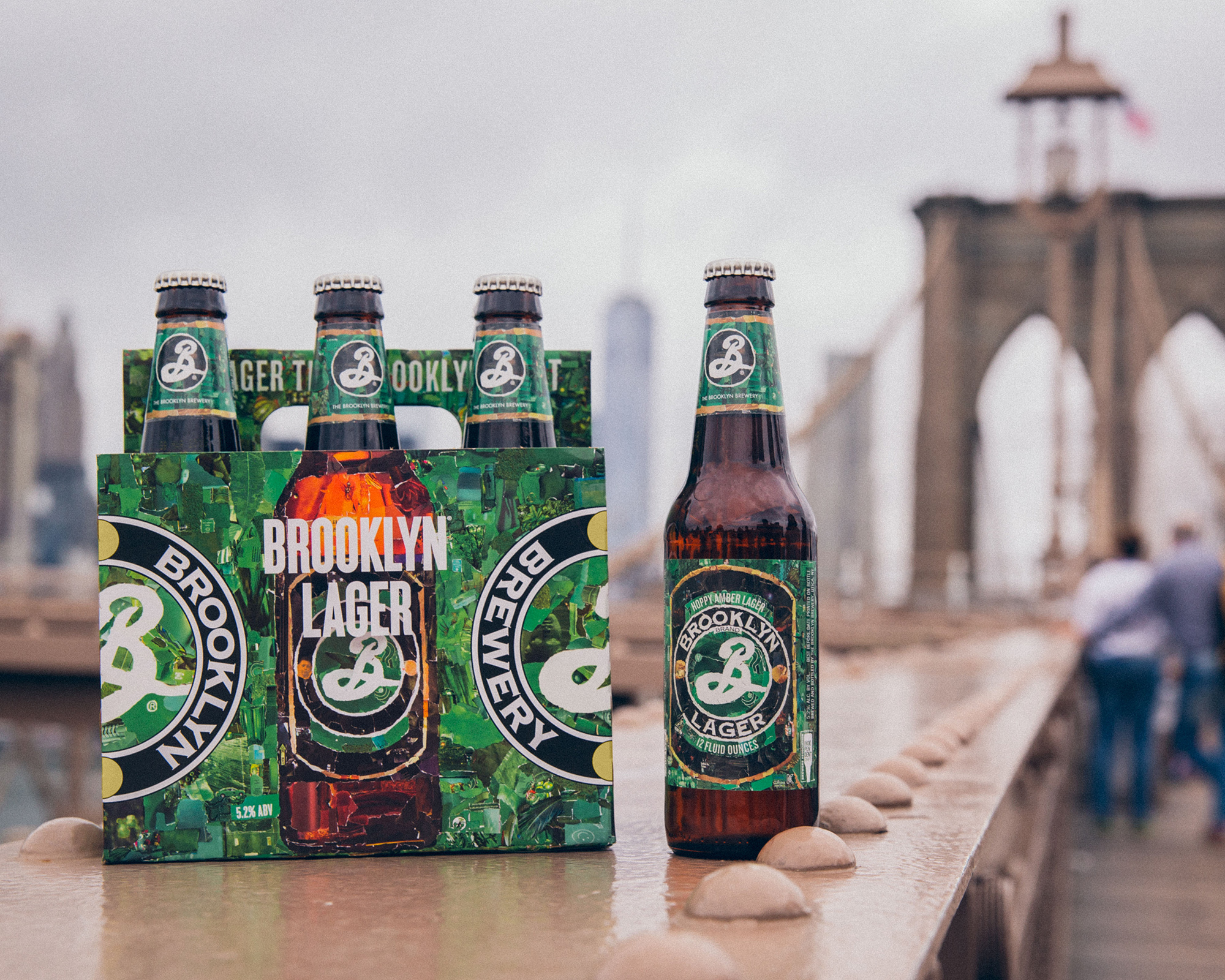India pale ales (IPAs) are the first beer style most people associate with the craft beer movement that has swept through America and many other beer-loving countries around the world. But lagers have played an influential role, too, and are still popular even if they don’t attract the same attention. In particular, Brooklyn Brewery’s flagship Brooklyn Lager occupies an important place in the craft beer movement–you could easily argue it belongs in the larger history of the lager itself.
It’s easy to understand why IPAs get so much attention. They are, after all, the most widely consumed craft beer category in the U.S. They have a lot of range in terms of flavor and usually plenty of flair. Most of the pioneers of the craft beer movement in America also founded their reputations on some variety of hop-forward ale, if not an IPA. But not so for Brooklyn Brewery. Many consumers are not fully conscious of how unusual it is for a craft brewery of this pedigree to have established itself in the pantheon of great breweries with a lager. What is it, then, with Brooklyn Lager?
Let’s start with the simple facts. Brooklyn Lager is a lager because it uses lager yeast as opposed to ale yeast. The latter generally lends itself to bigger, bolder flavor. Lagers, meanwhile, are often described as “cleaner” in character–more refreshing or drinkable or subtle. A common consumer perception is that they are lighter, and that’s mostly valid, too. Part of this character owes to lagering, whereby the beer undergoes a weeks-long, cold maturation process. Ales ferment at higher temperatures and can be ready to serve in just a couple of weeks.
The craft beer movement in America (and elsewhere) was in part a reaction to the light, industrial lagers that had come to dominate the market. Interestingly, Brooklyn Brewery co-founder Steve Hindy has written about this history extensively in his book The Craft Beer Revolution (also available in Japanese translation). Many early craft brewers produced hoppy ales that stood in clear contrast. It may seem like a strange decision for the brewery to have tried to differentiate itself from industrial lagers with another lager. Or was it providing an easy stepping stone for consumers in the dawn of the craft beer revolution?
Brooklyn Lager was actually rather bold for its time, a lager that was nevertheless surprisingly bitter and aromatic. Brooklyn Brewery brewmaster Garrett Oliver and current president Robin Ottaway have both told us stories of early consumers sending the beer back at retail accounts because it was so far ‘out there’ in terms of flavor. In this day and age of IPAs and other hoppy beer styles, it’s no longer an outlier, but it was definitely a pioneer that changed the palates of millions of beer drinkers.
Taking a closer look, the beer’s concept is partially based on the Vienna lager style. This style was ubiquitous in Brooklyn during the late 1800s, thanks to Austrian immigrant brewers. Until the craft beer revolution in the late 20th century, though, the style had waned to the point of obscurity (with the notable exception of widespread production in Mexico). The key characteristic of Vienna lagers are their use of Vienna and/or Munich malt, which produce malty-sweet flavor with notes of nuttiness. Brooklyn Lager does indeed use both and has mild malt flavor. It also characteristically uses Noble hops (Old World/European; in this case, Hallertauer Mittelfrüh).
Where Brooklyn Lager departs from this classic style is where it becomes unique. Brooklyn Lager also uses that most American of hops, Cascade, with its spice-and-citrusy notes. It further employs dry hopping (steeping the maturing beer with hops to impart a lively touch of hop character to the flavor and aroma). Finally, some hints of caramel come through on the finish from caramel malt used in the recipe. While it wasn’t unusual for Vienna lager brewers to use caramel malt for a little color and sweetness, it seems more pronounced in the Brooklyn Lager.
This more assertive hop and malt character make it an American-style amber lager, as far as the U.S. Brewers Association style guidelines are concerned. In recent years, the term IPL, or India pale lager, has even emerged to describe lagers with IPA-like character (ie, conspicuous hoppiness). IPL is not an officially recognized category (yet), but some might describe Brooklyn Lager as such. At the very least, Brooklyn Brewery’s flagship anticipated this hoppy lager trend. Whatever you prefer to call it, it’s hard to argue with what some of the world’s best beer judges decided at the 2018 World Beer Cup competition: the Brooklyn Lager was a world-class example of the American-style amber lager. They gave it the gold.
These days, there seems to be renewed interest in lagers among craft beer enthusiasts. It’s not that Brooklyn Lager ever lost the interest of its fans. It’s just that discerning drinkers are realizing that perhaps they didn’t give proper attention to exploring lagers. They’re considering what they might have overlooked in all the IPA fanfare. If you’re a craft beer connoisseur looking to re-assess lagers, Brooklyn’s is a good place to start. And if you’re just getting started with craft lagers, well, our answer is the same.
For further reading:
Interview with Garrett Oliver (2013)
This article was published in Japan Beer Times # () and is among the limited content available online. Order your copy through our online shop or download the digital version from the iTunes store to access the full contents of this issue.




